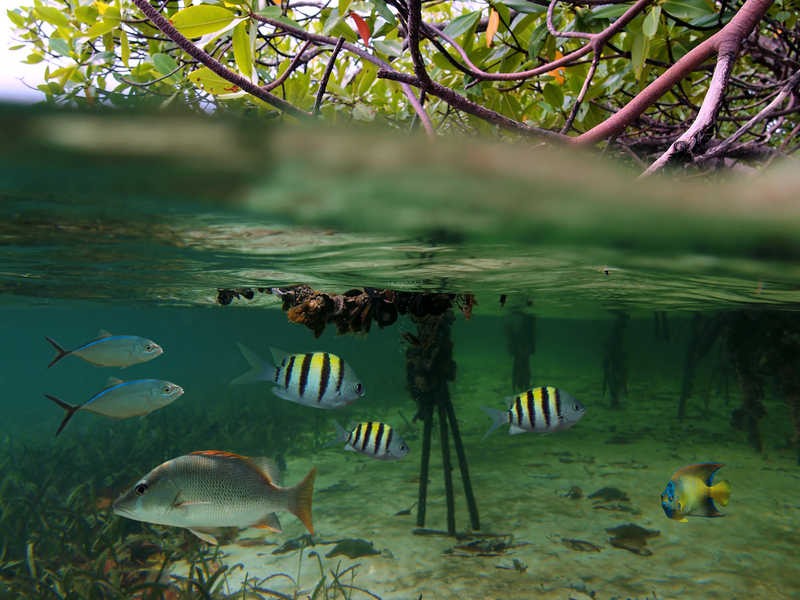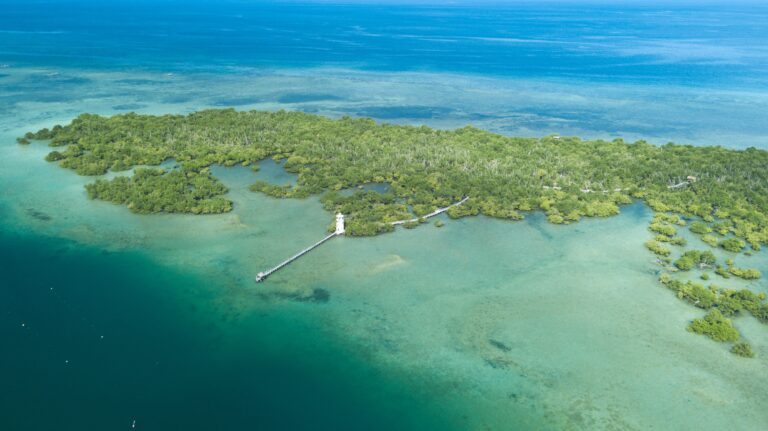Mangroves, often overlooked but immensely important, serve as a natural shield against the relentless forces of coastal erosion, tropical storms, and rising sea levels. Beyond their protective function, mangroves are intricate ecosystems that provide habitat and sustenance to a myriad of marine species. Their significance in ocean conservation cannot be overstated. In this comprehensive article, we will delve into the world of mangrove conservation, emphasising their role in protecting coastlines, supporting biodiversity, and mitigating climate change.
The Ecological Significance of Mangroves
Mangroves are coastal forests consisting of salt-tolerant trees and shrubs that thrive in the interface between land and sea. These remarkable ecosystems are uniquely adapted to the challenging conditions of brackish water, tidal fluctuations, and high salinity. Here are some of the ecological roles they play:

- Nursery for Marine Life: Mangroves serve as crucial nurseries for countless marine species, including fish and crustaceans. The labyrinthine root systems of mangroves offer shelter and protection for young marine life, enabling them to grow and thrive.
- Biodiversity Hotspots: Despite covering a mere 0.1% of the Earth’s land surface, mangroves support an astonishing diversity of species. Birds, reptiles, amphibians, and mammals are among the inhabitants, making mangroves among the most biologically diverse ecosystems on the planet.
- Carbon Sequestration: Mangroves are highly efficient at trapping and storing carbon dioxide, making them vital in the fight against climate change. They store carbon in their biomass and in the sediments beneath them, sequestering carbon at rates much higher than many other forests.
- Erosion Control: Mangroves act as natural barriers against coastal erosion. Their complex root systems bind soil together, preventing it from being washed away by waves and tides. This function is invaluable for protecting vulnerable coastal communities.
Challenges Facing Mangroves
Despite their immense ecological importance, mangroves face a multitude of threats, pushing them towards the brink of destruction:
- Habitat Loss: Mangroves are under relentless pressure from urban development, aquaculture, and tourism. Coastal areas are prime real estate, leading to the clearing of mangrove forests for human activities.
- Pollution: The runoff of pollutants from agriculture, industry, and urban areas threatens mangrove health. Chemicals, sewage, and plastics find their way into these sensitive ecosystems, disrupting their balance.
- Climate Change: Rising sea levels and increasing temperatures pose a significant threat to mangroves. As sea levels rise, mangrove forests may become submerged, leading to their loss. Warmer waters can also harm these ecosystems and the species that depend on them.
- Over harvesting: Mangroves are often exploited for their timber and other resources, such as shrimp farming. Unsustainable harvesting practices can lead to the degradation of mangrove habitats.
- Invasive Species: Introduced species can outcompete native mangrove plants, disrupting the balance of these ecosystems.
Conservation Efforts and Strategies
Mangrove conservation is an urgent global priority. Several strategies and initiatives are underway to protect and restore these vital coastal ecosystems:
- Protected Areas: Establishing marine protected areas (MPAs) that include mangrove habitats is an effective way to safeguard these ecosystems from destructive activities like logging and fishing.
- Reforestation and Restoration: Numerous organizations are actively engaged in mangrove reforestation efforts, replanting degraded areas to help restore their ecological function.
- Community Engagement: Involving local communities in mangrove conservation is essential. Sustainable livelihoods, such as eco-tourism and sustainable aquaculture, can reduce the pressure on mangroves.
- Policy and Legislation: Governments play a crucial role in mangrove conservation by enacting and enforcing legislation that protects these ecosystems. International agreements like the Ramsar Convention provide a framework for such efforts.
- Education and Awareness: Raising awareness about the ecological importance of mangroves among the general public, as well as policymakers, is essential for garnering support for conservation efforts.
Success Stories in Mangrove Conservation
While the challenges are significant, there are notable successes in mangrove conservation:
- Sundarbans, Bangladesh: The Sundarbans, the largest mangrove forest in the world, has benefited from conservation efforts aimed at protecting the Bengal tiger and other wildlife. Community-based conservation initiatives have also played a role in safeguarding this critical ecosystem.
- Mangroves in Mexico: In Mexico, conservation organisations have collaborated with local communities to restore and protect mangroves. These efforts have helped to reduce deforestation and improve the livelihoods of coastal communities.
- Mangrove Conservation in Kenya: Community-led mangrove restoration projects in Kenya have not only improved mangrove health but also created sustainable sources of income for local residents.
Conclusion
Mangroves are the unsung heroes of ocean conservation. Their intricate root systems, lush canopies, and rich biodiversity provide an array of benefits to both marine life and coastal communities. However, they face an array of threats that require urgent and sustained action.
Through conservation efforts such as protected areas, reforestation, and community engagement, there is hope for the preservation of these invaluable ecosystems. Mangrove conservation is not only about protecting nature but also about safeguarding the resilience of our coastlines, mitigating climate change, and ensuring a sustainable future for all. By recognising the importance of mangroves and taking decisive action to protect and restore them, we can play a vital role in ocean conservation and secure the health of our planet for generations to come.
UP NEXT
Sustaining the Rainbow of the Ocean: Coral Reef Conservation
Preserving Paradise: Sea Turtle Conservation in Bali



